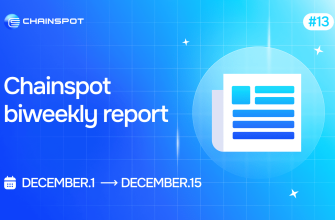In recent developments, three cryptocurrency projects vanished from online platforms shortly after blockchain investigator ZachXBT traced their liquidity back to funds obtained from previous hacking incidents.
On April 14th, ZachXBT identified a specific wallet address that was using stolen funds to provide liquidity to three newly launched crypto projects: Leaper Finance on Blast (with 1,800 X followers), Zebra DAO on Base (with 3,200 followers), and Glori Finance on Arbitrum (also with 3,200 followers).
Update: Scammer started trolling before deactivating both Leaper Finance & Glori Finance X accounts.
All three websites for the projects mentioned are now offline as well. pic.twitter.com/Az1TLZDmMq
— ZachXBT (@zachxbt) April 14, 2024
Further scrutiny revealed that this wallet had previously been associated with financing a rug pull scheme and was currently supplying liquidity to multiple projects across various blockchains, including Base, Solana, Scroll, Optimism, Arbitrum, Ethereum, and Avalanche.
Following public exposure on social media platform X, the websites and social media accounts of these projects were promptly deleted and remain inactive. Interestingly, the individual managing the Leaper Finance account acknowledged ZachXBT’s ability to uncover fraudulent projects before shutting down the account.
Update: Scammer started trolling before deactivating both Leaper Finance & Glori Finance X accounts.
All three websites for the projects mentioned are now offline as well. pic.twitter.com/Az1TLZDmMq
— ZachXBT (@zachxbt) April 14, 2024
In a parting message, the account mentioned, “Nice work! My comrades here at Lazarus fear you yet admire you!” while hinting at a potential partnership for launching a new scam token.
According to ZachXBT, these scammers have been linked to substantial crypto thefts from projects like Magnate Finance, Kokomo Finance, Lendora, and Solfire, amounting to millions of dollars in losses.
This pattern suggests that stolen funds are being repurposed to create deceptive crypto projects, often executed through rug pulls or exit scams targeting unsuspecting investors.
To safeguard against such risks, investors are strongly advised to conduct extensive research before investing in any crypto project. This includes performing background checks on the team and founders and verifying the legitimacy of audit reports.
Meanwhile, Ethereum’s layer-2 protocol Base has witnessed a significant surge in funds lost to phishing scams, recording an 18-fold increase in March compared to January. Scam Sniffer, an anti-scam platform, reported approximately $3.35 million stolen from phishing scams on Base in March alone, with expectations of more phishing attacks in April as the platform’s user base continues to grow amidst a memecoin frenzy.
[1/7] 🚨💸 ScamSniffer's March Phishing Report
Crypto phishing scams hit $71M in March, marking a 50% increase in stolen funds from February.
The first quarter of 2024 has seen a total of $173M lost to phishing scams. 📈🔒 pic.twitter.com/Z40WHJRYv4— Scam Sniffer | Web3 Anti-Scam (@realScamSniffer) April 2, 2024












